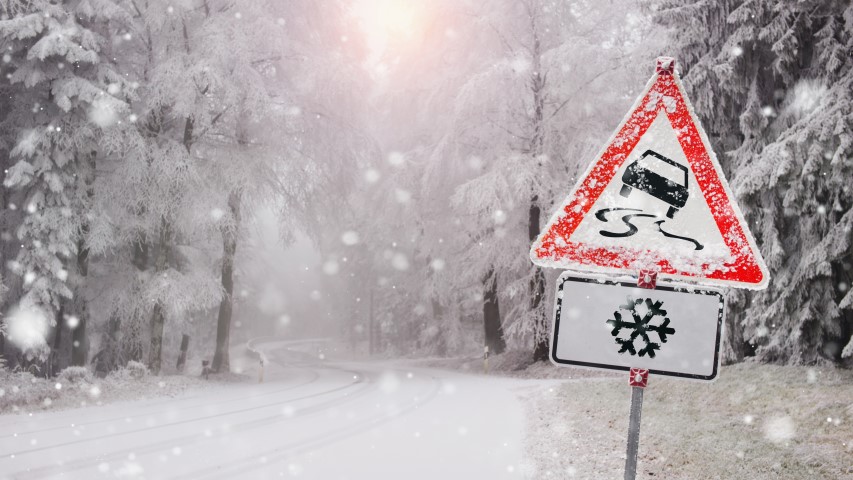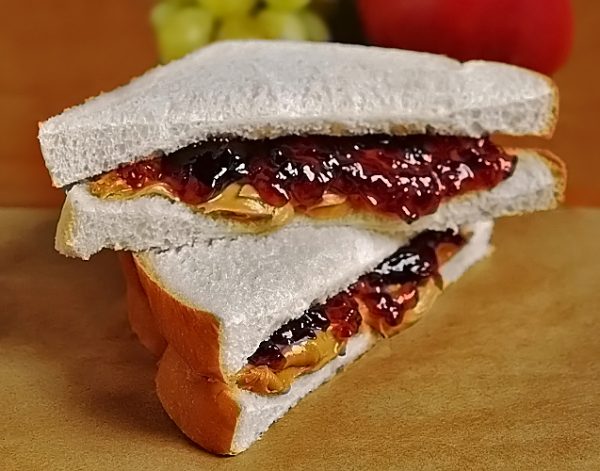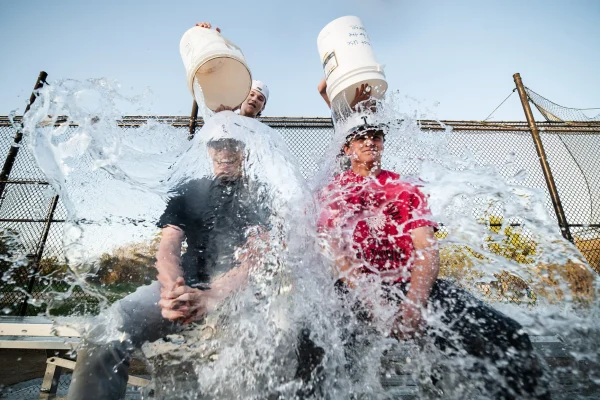Driving in Idaho: Winter Preparedness
Driving in the wintertime can be stressful, but it can be even worse if you’re unprepared for the winter conditions. On January 3, 2022, Interstate 95 from Virginia to Washington D.C. became a parking lot for many Virginia residents and others. The perfect storm had hit Virginia the night before the chaos began to start. That night, with rain beating down on the interstates, Virginia Department of Transportation (VDOT) was forced to stay inside so they would be unable to salt/brine the roads while wet. These methods are used to prevent ice and snow from sticking to roads. It wasn’t long after that the temperature dropped below freezing, turning rain into snow and the wet ground into ice. Citizens began driving on the slick interstate road on Monday morning, January 3, only to spin off or crash. Several semi-trailers reportedly “jackknifed”, an uncomfortable situation to be in, as it involves the trailer sliding to the point that it pushes the cab in any one direction. The first incident of this happened on that Monday morning, when a tractor-trailer slid on the ice, causing the interstate back up reported by several news outlets.
This is where the story took a turn for the worse. With the tractor-trailer, and several others, blocking the interstate, VDOT was unable to get snow plows to clear paths for the cars still stuck on I-95. When the afternoon of Monday rolled around, those people who had remained stuck on the interstate, were given false hope. The sun came out from behind the clouds, and many assumed that the ice and snow would melt, but they were tragically wrong. Temperatures stayed below freezing and it took much longer than anticipated for VDOT, and others, to move the trailers and trucks that had jackknifed or spun out from the interstate, and before long, four more inches of ice and snow had blanketed the roadway. Then, Virginia shut down 50 miles of the interstate.
It wouldn’t be until the late evening hours of Tuesday January 4th that the interstate was finally cleared. Drivers had been stuck for over twenty-four hours without food, water, and most without the necessary clothing or gas to be in the cold. Temperatures dropped even further, reaching the low teens. Unfortunately, this incident in Virginia isn’t a singular event, in fact, not too long ago, Island Park had a terrible 40 car pile-up due to slick roads, low visibility, and rapidly descending snow. While twenty-four hour traffic jams aren’t common in Idaho, road closures are, as are torrential snow storms. Sometimes, people are stranded for hours on Idaho roads and interstates with no food, water, or gas; that’s just not something we can have happening to us. So, I, as a native Idahoan, along with others at The BroncWriter have come up with things to keep in your car, as well as things to do, in case of an emergency in this, our winter season.
First, here’s a few things to keep in your car. This is Idaho, after all. It does get fairly cold here. The lowest recorded temperature was -62 degrees Fahrenheit, so, any and all Idahoans need to be prepared for that. Keep a durable blanket or quilt in your car, as well as a coat and gloves that can withstand negative temperatures and snow. Snow boots should also be near the top of the list, because there are times when you may have to walk in the snow for help. Next things you should consider are small shovels, ice scrapers, and snow brushes for your car. Your windshield wipers are not going to be able to clear two or more inches of snow and ice off of your windshield, so be prepared to do that yourself with your ice scraper and snow brush. Next, you should have food and water with you. If your conditions worsen, and you’re stuck somewhere, you need to be able to survive until help arrives. Such items as Gatorade, bottled water, granola bars, and jerky are great to have for emergencies. They’ll keep you hydrated and full. Another thing you should keep in mind is de-icing salt or kitty litter to get your car off the ice. Keep jumper cables in your car as well, you might need them if your car dies.
Though these items are nice to have in case of a wintry emergency, there are things you need to do. Always double check weather conditions before you leave and remember to drive slowly when the weather is inclement and always keep your gas tank above half, just in case.. If you’re driving in the ice and snow, do not attempt to slam on your breaks or over-correct your steering. This will lead you to spin out, drift, or worse. Instead, slowly correct your steering and take your foot off of the accelerator. But, if you do spin out, do the following things to ensure safety. Depending on your situation, you need to call for help. Whether that help is a trusted friend or 911, you need to call. Your phone will ping off of the nearest tower, regardless of circumstance if you dial 911. As you wait for help to arrive, you need to conserve your fuel. Turn your car off, and put your hazard lights on. Then, every-so-often, get out of your car and brush it off. You need to keep your car visible in the snow. If you’re stranded for longer periods of time, turn your heat on, but keep in mind that you will still need fuel to get to the next destination. The last thing I can recommend is this: keep the mood light. Help is coming. If you’re being overly worried about your circumstances, your brain will trick you into thinking that you will die there, but that will not be the case. If you’ve done everything right, you will be found. Try to take this moment to remember good things, maybe, if you have internet access, take the time to enjoy a favorite show. But never, never, get caught up in worry.
As we all make the trek to school and work during the rest of the season, I hope you remember these tips and take them with you. After all, you never know what Idaho has in store for you.

Blair Warren has a passion for language and learning. Whether it is writing her own fantasy novel or newspaper article, Warren is a talented author with...









Abby • Feb 10, 2022 at 9:28 am
Very good information.
Xander J • Jan 25, 2022 at 1:09 pm
Very helpful!!
Emery • Jan 24, 2022 at 1:25 pm
Thank you so much this is so helpful!
Jac P • Jan 19, 2022 at 2:42 pm
This is actually helpful advice that could save someone’s life. Thanks for saying this because some of these I never would have thought of.
Avry B. • Jan 19, 2022 at 1:51 pm
This is so helpful!!!
Mack Mauger • Jan 19, 2022 at 1:50 pm
Great tips!
Peyton Barnett • Jan 19, 2022 at 1:48 pm
Great article, and super helpful.
EC • Jan 19, 2022 at 1:47 pm
this is good advice
Adalberto A • Jan 19, 2022 at 1:42 pm
Thanks for the tips!
Quade Moore • Jan 19, 2022 at 1:40 pm
Very helpful tips for newcomers!
K • Jan 19, 2022 at 9:11 am
What a great list! It definitely helped me think about what I will need in my car as I will soon be able to drive without my parents. This is a very thought out paper. Thank you for giving us multiple ideas and letting us know what we will need.
Taylor Pope • Jan 19, 2022 at 9:05 am
I agree, there are lots of situations every winter that we hear about and I think we all could be more prepared. I am going to take this advice and try to be more careful on the roads this year!
Shaylee • Jan 19, 2022 at 9:05 am
Thank you for sharing this and spreading awareness! It’s always good to be prepared!
Ash • Jan 19, 2022 at 9:05 am
Thank you for sharing information about how bad the roads are in Idaho. This is going to be very useful for people who live in Idaho and people who Travel to Idaho. Very good list
Hallie Jensen • Jan 19, 2022 at 9:04 am
I think that this is a very helpful topic to be addressed. I hear about times when people are not prepared, and they find themselves in a difficult situation. Although, you could have all of the necessary items in case of an emergency, you still need to be educated on how to handle a stressful situation. These tips can and will be very helpful, for those that aren’t very educated in driving in winter conditions.
Ayla • Jan 19, 2022 at 9:03 am
This is a nicely written article! Thank you for going over the topic about things to keep in your car. It is very important and definitely beneficial for new drivers in Idaho.
preslie • Jan 19, 2022 at 9:02 am
great way to help prepare new people coming to idaho
Caleb • Jan 19, 2022 at 9:02 am
I think this article will help a lot of people who are new to Idaho. If you are new to Idaho and still can’t figure out how to drive in snowy conditions then I suggest going back where you came from.
Kayla Fisher • Jan 19, 2022 at 9:00 am
This article was very helpful and had lots of good information. The article was written well and I encourage others to read it.
Carter Andersen • Jan 19, 2022 at 8:58 am
I like this. There is lots of good information and tips, we should all be prepared.